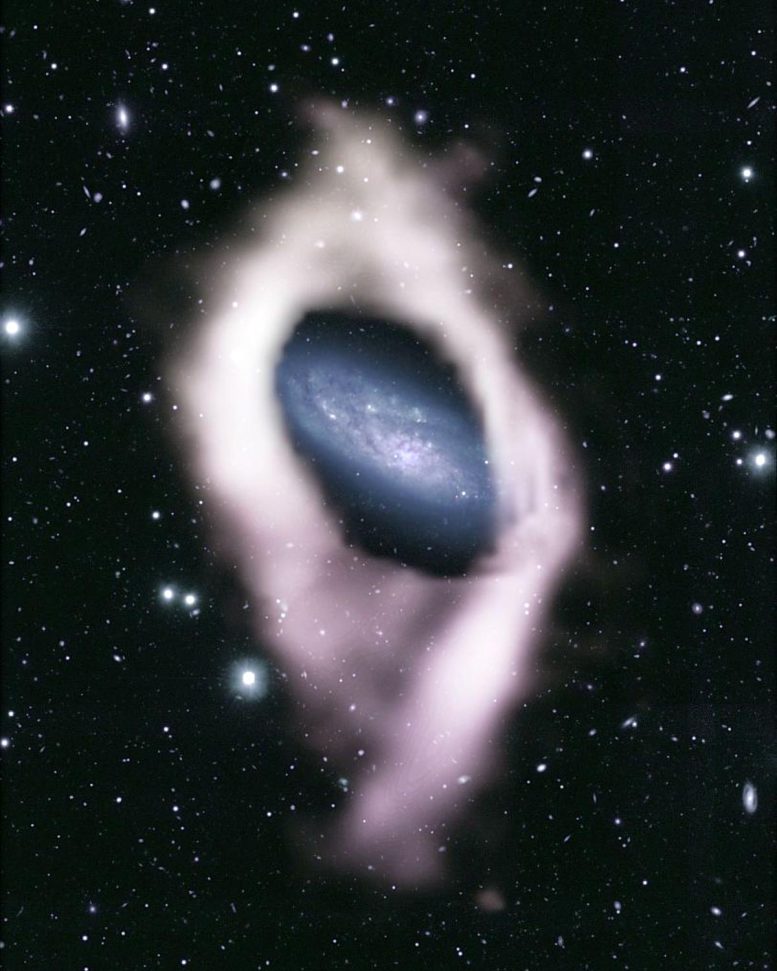By NASA
November 25, 2023
Potential polar ring galaxy NGC 4632. The picture shows a gaseous ring perpendicularly circulating the main spiral disk of the galaxy. Credit: Jayanne English (U. Manitoba), Nathan Deg (Queen’s U.) & WALLABY Survey, CSIRO / ASKAP, NAOJ / Subaru Telescope
Galaxy NGC 4632 harbors a concealed feature invisible to optical telescopes. This galaxy is encircled by a cool hydrogen gas ring that orbits perpendicularly to its spiral disk. Polar ring galaxies, known for such unique formations, are typically identified through starlight observations. However, NGC 4632 stands out as one of the initial discoveries made using a radio telescope survey.
ASKAP and Subaru Telescopes: A Composite View
This exceptional find was made possible through a composite image. This image merges the gas ring, captured by the highly sensitive ASKAP radio telescope, with optical data sourced from the Subaru telescope. Astronomers utilized virtual reality technology to differentiate the gas in the galaxy’s main disk from the ring. The image’s subtle color gradient maps the ring’s orbital motion.
Exploring the Origin of Polar Rings
The existence of polar rings raises intriguing questions. One theory suggests they might form from material drawn out of a galaxy during gravitational interactions with a neighboring galaxy. Another possibility is the accumulation of hydrogen gas from the cosmic web’s filaments, which then forms a ring around a galaxy. Over time, some of this gas may contract gravitationally, leading to star formation.
>>> Read full article>>>
Copyright for syndicated content belongs to the linked Source : SciTechDaily – https://scitechdaily.com/invisible-hydrogen-halo-revealing-a-galaxys-hidden-polar-ring/
































